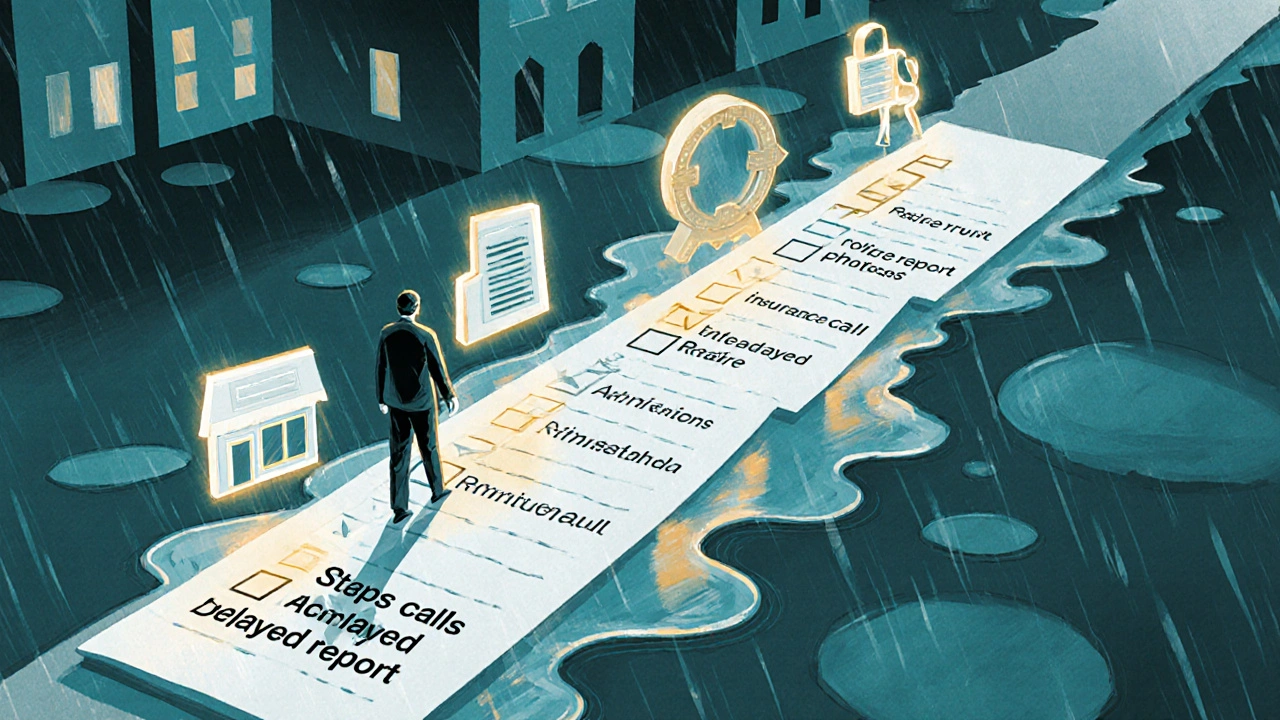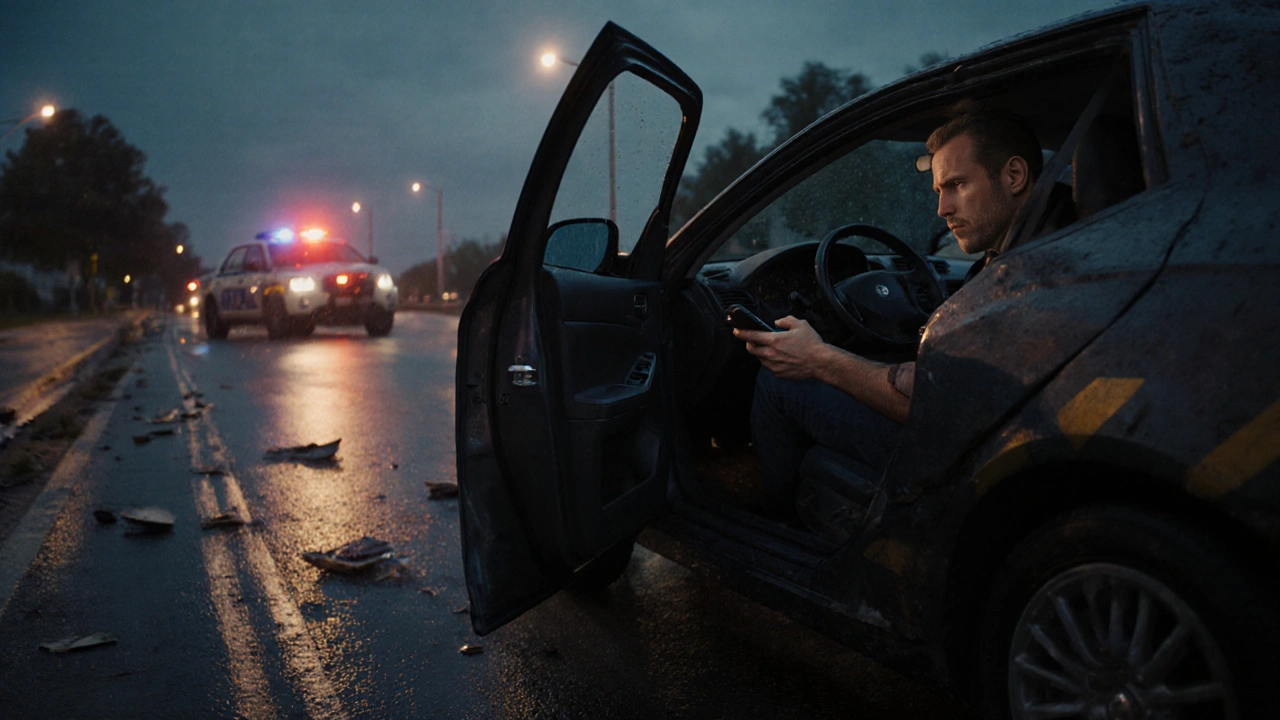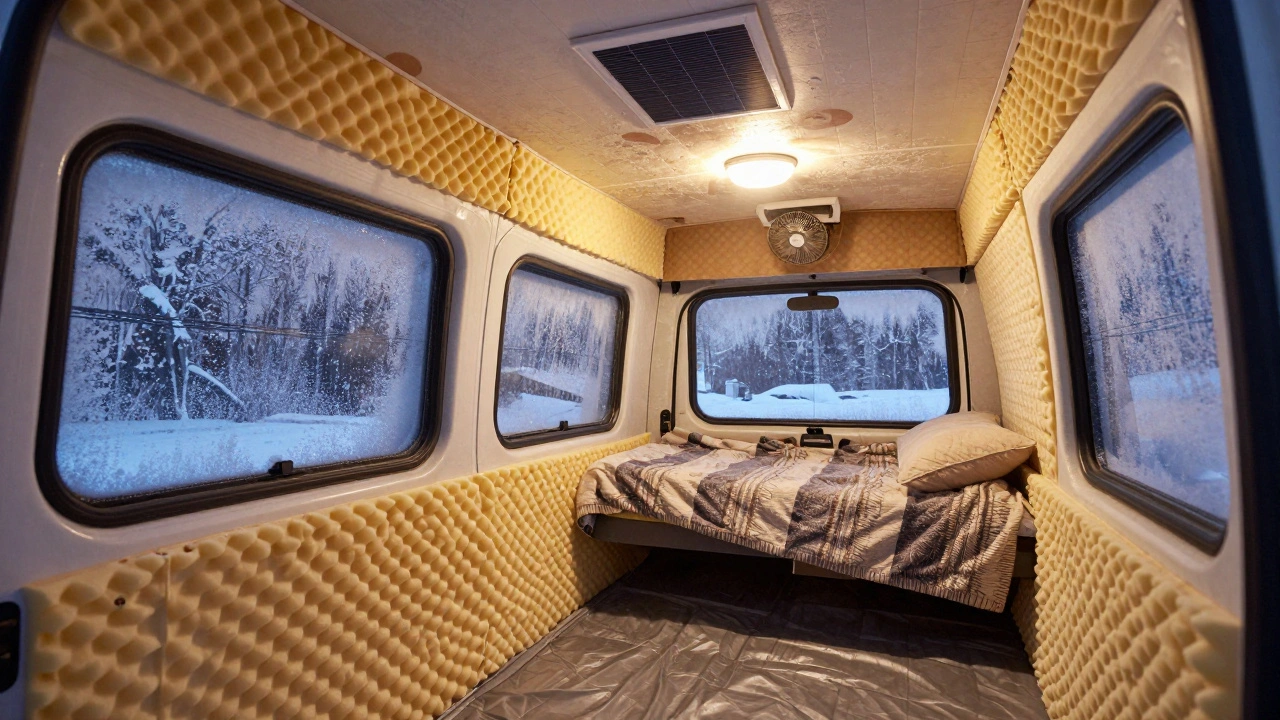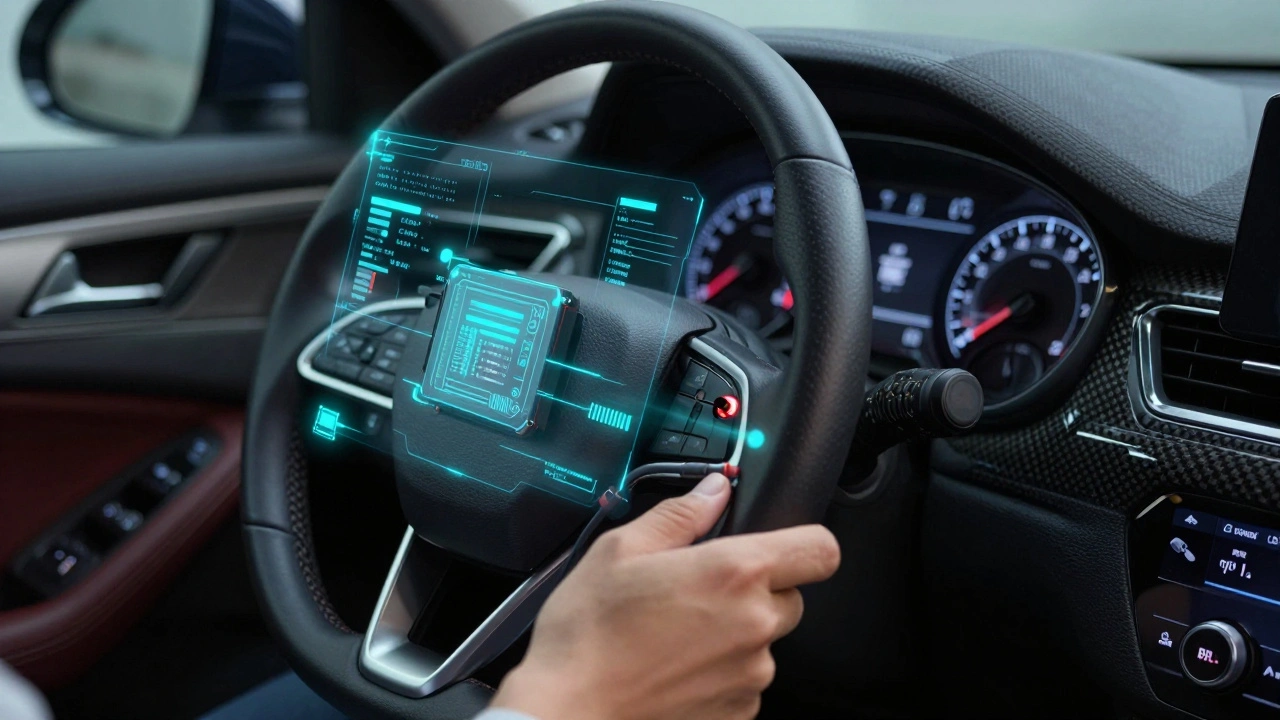Getting into a car accident is stressful enough without having to figure out how to file a claim. You’re shaken up, maybe injured, and now you’re supposed to call your insurer, take photos, fill out forms-all while your mind is racing. But here’s the truth: filing a car insurance claim doesn’t have to be a nightmare. If you know the steps, it’s just a process. A messy one, sure, but one you can handle.
Step 1: Make Sure Everyone Is Safe
Your first move after an accident isn’t to grab your phone or check your insurance card. It’s to check on people. If anyone’s hurt, call 911 right away. Even if the damage looks minor, don’t assume everything’s fine. Whiplash and internal injuries don’t always show up right away. Move vehicles out of traffic if you can do it safely. Turn on your hazard lights. If you’re on a busy road and can’t move the car, stay inside with your seatbelt on until help arrives.Step 2: Call the Police
In Oregon, you’re legally required to report any accident that results in injury, death, or more than $2,500 in property damage. Even if the other driver says it’s not necessary, get a police report. Insurance companies take reports from law enforcement way more seriously than a handwritten note from the other party. The officer will document the scene, gather statements, and assign fault based on evidence. That report becomes your best ally when you file your claim.Step 3: Exchange Information
Don’t just nod and walk away. You need the other driver’s full name, phone number, address, driver’s license number, license plate, and insurance details. Write it down. Don’t rely on your phone to take a photo of their insurance card-sometimes those photos are blurry or cut off the policy number. Also take a photo of their license. And don’t argue about who’s at fault. Say as little as possible. Just exchange the basics. Anything you say can be used against you later, even if you’re just being polite.Step 4: Document Everything
This is where most people mess up. They take one quick photo and think they’re done. Don’t. Take at least 10 photos: front, back, sides, close-ups of damage, skid marks, traffic signs, road conditions, and the other vehicle’s license plate. If it’s raining or icy, photograph the weather. If there’s a broken stoplight or missing guardrail, get that too. Your insurer needs to see the full context. Also record the time, date, location, and weather. Use your phone’s camera to take a video walking around the scene-it’s more helpful than you think.Step 5: Notify Your Insurance Company
Call your insurer as soon as you can. Most companies have a 24/7 claims hotline. Don’t wait until tomorrow. Delaying can slow down your claim or even give the insurer a reason to deny it. When you call, have your policy number ready. Be calm, clear, and stick to the facts. Say what happened, when, where, and who was involved. Don’t guess. Don’t speculate. If you don’t remember something, say so. The claims adjuster will ask for your police report number and photos. Have those handy.Step 6: The Claims Adjuster Contacts You
Within 24 to 48 hours, you’ll hear from a claims adjuster. They work for your insurance company, not you. Their job is to assess damage, review your policy, and decide how much to pay. They might ask to inspect your car. You can choose where to take it-your mechanic, a preferred shop, or a drive-in claims center. If they send you a lowball estimate, don’t sign anything. You have the right to get a second opinion. Many insurers will cover the cost of an independent appraisal if you dispute their offer.
Step 7: Get Your Car Repaired
Once the estimate is approved, you can schedule repairs. If you’re using a preferred shop, they’ll handle the billing directly with your insurer. If you pick your own mechanic, you’ll usually pay upfront and get reimbursed. Keep every receipt. If your car is totaled, your insurer will offer you the actual cash value-the market value of your car before the crash, minus your deductible. That amount is based on Kelley Blue Book, Edmunds, or similar sources. If you think their offer is too low, provide recent listings of similar cars in your area. You’re not arguing for a new car-you’re asking for fair market value.Step 8: Get a Rental Car (If You Need One)
If you have rental reimbursement coverage, you’re covered for a rental while your car is being fixed. Most policies give you $30 to $50 per day for up to 30 days. Don’t rent a luxury SUV just because you can. Stick to a basic economy or compact car. Your insurer will only pay what’s considered reasonable. If you don’t have rental coverage, you’re on your own. Some credit cards offer rental car insurance, but check the fine print-they often don’t cover liability or loss of use.Step 9: Review Your Settlement
Before you accept the final payment, read everything. The settlement letter should list: the damage amount, your deductible, the payout amount, and any deductions (like salvage value if your car was totaled). Make sure medical bills, towing fees, and other out-of-pocket costs are included. If you had a personal injury, make sure your medical expenses are fully covered. Some people forget to ask for reimbursement for lost wages or physical therapy. Don’t sign a release until you’re sure everything’s included. Once you sign, you can’t come back for more.Step 10: Follow Up and Keep Records
Keep copies of every document: police report, repair invoices, medical bills, emails, adjuster notes, and settlement letters. Store them in a folder or cloud drive. If your claim gets delayed or denied later, you’ll need proof. Also, follow up every 5-7 days if you haven’t heard back. Insurance companies are busy. A polite call can move your claim forward faster than waiting.What Not to Do
There are big mistakes people make that cost them money or delay their claim:- Don’t admit fault at the scene-even saying "I’m sorry" can be twisted into an admission.
- Don’t accept a quick cash offer from the other driver. They might disappear, or their insurance might deny everything.
- Don’t skip the police report, even for minor fender benders.
- Don’t sign a medical release without talking to your doctor first. Your insurer might try to access unrelated health records.
- Don’t ignore medical symptoms. Pain that shows up days later still counts.

How Long Does It Take?
Most simple claims-like a single-car fender bender with no injuries-are settled in 7 to 14 days. Complex claims involving injuries, multiple vehicles, or disputed fault can take 30 to 90 days. Oregon law requires insurers to acknowledge your claim within 15 days and either accept or deny it within 30 days after they have all the information. If they miss that deadline, you can file a complaint with the Oregon Insurance Division.What If Your Claim Is Denied?
Denials happen. Sometimes it’s because you missed a deadline. Other times, the insurer claims you weren’t covered at the time (like if your policy lapsed). If you get a denial letter, read it carefully. It must explain why. You have the right to appeal. Gather your evidence: photos, witness statements, repair estimates, and the police report. Write a clear letter explaining why you disagree. Send it certified mail. If the insurer still refuses, contact the Oregon Insurance Division. They mediate disputes for free.Can You File a Claim Without a Police Report?
Technically, yes. But you’re making it harder on yourself. Without a police report, your insurer has no independent proof of what happened. They’ll rely on your word and the other driver’s. If they disagree, you’re stuck in a he-said-she-said battle. Most insurers won’t pay out without a report if there’s any dispute. Save yourself the headache. Always call the cops.Does Filing a Claim Raise My Rates?
It might. But not always. In Oregon, insurers can raise your rates after an at-fault accident, but not for claims where you weren’t at fault. If someone else hit you and they’re insured, your rates shouldn’t go up. Even if you’re partially at fault, Oregon law limits how much your premium can increase. Most insurers use a point system. One claim usually adds 1-2 points. Two claims in three years? That’s when you’ll see a noticeable jump. Shop around every two years. You might find a better rate even after a claim.Do I have to use the repair shop my insurance recommends?
No. You have the right to choose any licensed repair shop. Insurance companies may suggest preferred shops because they have negotiated lower rates, but you’re not required to go there. If you pick your own mechanic, your insurer must still cover the cost as long as it’s reasonable and you provide an estimate. Just make sure the shop gives you a written estimate before starting work.
What if the other driver is uninsured?
If you have uninsured motorist coverage-which is required in Oregon-you can file a claim with your own insurer. This covers your vehicle damage and medical bills. Your insurer will then try to recover the money from the at-fault driver. Without this coverage, you’re stuck paying out of pocket or taking legal action, which can take years.
How soon do I need to file a claim after an accident?
Most insurers require you to report an accident within 24 to 72 hours. Waiting too long can make it harder to prove what happened. Evidence fades, memories blur, and witnesses disappear. Even if you think the damage is minor, report it immediately. It’s better to file and find out you don’t need to use it than to miss a deadline and lose coverage.
Can I file a claim for damage that happened weeks ago?
Maybe. Insurance policies usually have a time limit-often 30 days-to report damage. If you didn’t notice the damage right away, like a hidden frame bend after a minor hit, you might still be covered. But you’ll need to explain why you waited and provide evidence. The longer you wait, the harder it is to prove the damage was from the accident and not from something else.
Will my insurance cover a rental car if I’m not at fault?
Yes, but not through your policy. If the other driver is at fault, their insurance should pay for your rental car while yours is being repaired. Your insurer won’t cover it unless you have rental reimbursement. So if you’re not at fault, ask the other driver’s insurer for a rental. If they delay, contact your own company-they may advance you a rental while they pursue reimbursement from the other party.






Ryan Toporowski
November 20, 2025 AT 00:50Just filed a claim last month after a rear-ender-this guide saved my sanity 🙌. Took pics of everything, even the cracked sidewalk. Insurance guy was shocked I had 17 photos. Called it "professional level." Worth it.
Also, never admit you're sorry. I said "you okay?" and they tried to use it against me. Wild.
Stay cool, stay documented.
Samuel Bennett
November 21, 2025 AT 06:32Police report? Please. Most cops just write "driver error" because they hate paperwork. I’ve seen it. They don’t even check brake lights. Your photos are the only real evidence. And that "24-48 hour" adjuster window? Lol. Mine took 11 days. They drag their feet until you give up.
Also, "actual cash value"? My 2018 Camry was valued at $12k. Same model down the street was listed for $19k. They’re lying. Always dispute.
Rob D
November 21, 2025 AT 16:11Let me break this down for you peasants who think insurance is a service. It’s a fucking extraction racket. They want you to think you’re "protected" so you pay monthly like a sucker. Then when you need them? They’ll find a loophole in your policy written in 8pt font that says "damage caused by existential dread" isn’t covered.
And don’t get me started on "preferred shops." They’re paid kickbacks to use cheap parts. Your car becomes a Frankenstein of junk. Use your own mechanic. Or better yet-don’t get hit. Drive like a ninja.
Franklin Hooper
November 23, 2025 AT 13:55Step 4: Document everything. Note the absence of hyphenation in "close-ups"-should be "close ups" if following AP style. Also, "skid marks" is plural, but the sentence structure implies a singular object. Minor, but indicative of sloppy editing.
Also, the phrase "your mind is racing" is a cliché. Consider: "cognitive overload" for precision.
Otherwise, adequate.
Jess Ciro
November 23, 2025 AT 17:34They’re lying. Every single one. Insurance companies are owned by the same billionaires who run the auto manufacturers. They design cars to break in specific ways so repairs cost more. That’s why your fender bends just right to require a $4k replacement. They want you to pay more. They want you to be confused. They want you to sign the release.
Also, the police? They’re paid by the city, which is funded by fines. They’ll invent fault if they have to.
Trust no one. Not even this guide.
saravana kumar
November 25, 2025 AT 13:54This guide is very well structured. However, in India, we do not have rental reimbursement coverage. We also do not have a system where insurers pay for independent appraisals. If your car is damaged, you pay for repairs yourself and then submit receipts. The process takes 6 to 8 months. There is no 24-hour hotline. You wait. You beg. You cry.
Also, in Delhi, police do not come for fender benders. You exchange numbers and pray.
Still, the principles are sound. Just… adjust expectations.
Tamil selvan
November 27, 2025 AT 06:30Thank you for this comprehensive, thoughtful guide. It reflects a deep understanding of the emotional and logistical burdens involved in post-accident procedures. I particularly appreciate the emphasis on documentation and the reminder to avoid emotional reactions at the scene.
As someone who has assisted multiple clients through insurance claims, I can confirm that adherence to these steps significantly reduces stress and increases the likelihood of fair outcomes.
Please consider publishing this as a downloadable PDF-many elderly drivers and non-native speakers would benefit from having a physical copy to reference.
Well done.
Mark Brantner
November 27, 2025 AT 22:13Bro I just totaled my Honda Civic and this guide was my bible 🙏
Took 14 photos. One of them was of a squirrel staring at me like "this is your life now."
Adjuster came, looked at my pics, said "damn, you’re prepared."
Got paid in 9 days. No drama.
Also, never say "oops." I said "uh, yeah, that’s my fault" and they tried to make me pay the other guy’s Uber fees. Nope. Not today, Satan.
Kate Tran
November 28, 2025 AT 20:54Just a heads up-don’t forget to check your credit card benefits. Mine gave me rental coverage even though I didn’t buy it from my insurer. Found out after I’d already rented. Saved me $180.
Also, don’t let them pressure you into signing anything on the spot. Take it home. Sleep on it. You’ve got rights.
amber hopman
November 29, 2025 AT 21:06This is so helpful. I’ve been through two claims now and I wish I’d had this before the first one. One thing I’d add: if you’re injured, don’t wait to see a doctor just because you "feel fine." I waited three days and ended up with a herniated disc they tried to deny because "no immediate treatment."
Also, keep a log of every call-date, time, name, what they said. It’s boring, but it’s your armor.
Jim Sonntag
November 29, 2025 AT 21:46Love the guide. Real talk: the system’s rigged, but knowledge is the only weapon you’ve got.
Also, I’m from the Midwest. We say "fender bender" like it’s a hobby. But seriously-call the cops. Even if it’s just a scratch. One time I didn’t, and the guy vanished. Two weeks later, my insurance denied everything. "No third-party statement."
Now I carry a notepad and a flashlight in my glovebox. And a spare pen. Never trust a dry pen.
Deepak Sungra
December 1, 2025 AT 13:39Oh my god. This is so detailed. I’m crying. I had an accident last year and I didn’t know any of this. I just handed over my license and said "I’m sorry" and they took my car and never called back. I paid $3,000 out of pocket. I was so naive. I thought insurance was like a safety net. Turns out it’s more like a trapdoor with a sign that says "read the fine print or suffer."
Now I carry a USB drive with all my docs. I even scanned my dog’s vet records. Just in case.
Samar Omar
December 1, 2025 AT 20:05While the procedural guidance herein is undeniably meticulous, one cannot help but observe the underlying epistemological assumption that all parties operate within a framework of rationality and institutional integrity. In reality, the insurance apparatus functions as a neo-liberal mechanism of risk externalization, wherein the individual is systematically disempowered through obfuscation, bureaucratic inertia, and linguistic obfuscation encoded in policy language that would make a Derridean scholar weep.
Furthermore, the recommendation to "take 10 photos" is statistically insignificant when compared to the ontological fragility of digital evidence in the age of AI-generated imagery. How can one trust a photograph when even the most mundane image can be fabricated?
This guide, while well-intentioned, is a Band-Aid on a hemorrhage.
chioma okwara
December 2, 2025 AT 22:23Yoo this guide is fire🔥 but you forgot one thing: if you’re in Nigeria, don’t even bother with insurance. The cops will ask for 5k to show up. The mechanic will charge you double. The insurance company? They’ll say "your policy expired yesterday" even if you paid last week.
Just buy a new car. Or walk. Or move to Canada.
Also, spelling: "you’re" not "your". Just sayin’.